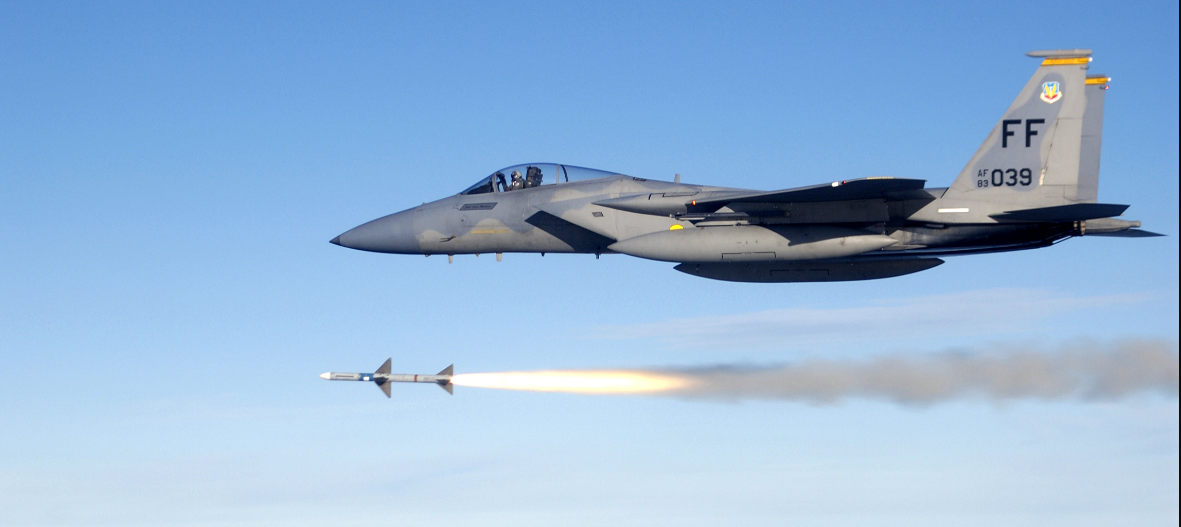Power on Ice: U.S. F-15 Eagles Roar Off Frozen Runways in Full Afterburner
Power on Ice: U.S. F-15 Eagles Roar Off Frozen Runways in Full Afterburner

https://www.bing.com/ck/a?!&&p=728f93841e8bd50cd3bc75999a370c2715bd6cf67fc5115ff8ce4d0688ea732bJmltdHM9MTc0NzM1MzYwMA&ptn=3&ver=2&hsh=4&fclid=3ad69f23-cc3a-68c2-0c07-8b38cdc869ee&psq=US+F-15&u=a1aHR0cHM6Ly9lbi53aWtpcGVkaWEub3JnL3dpa2kvTWNEb25uZWxsX0RvdWdsYXNfRi0xNV9FYWdsZQ&ntb=1In the dead of winter—when many aircraft struggle just to start—the F-15 Eagle demonstrates why it’s still a powerhouse of American air dominance. Watching one of these twin-engine jets thunder off a frozen runway with afterburners blazing is a sight that captures both brute force and engineering brilliance. Even in the harshest climates, the Eagle takes flight with authority, proving it’s as fierce in snow and ice as it is in the desert or sky.
This feature explores how the F-15 continues to perform reliably in extreme cold and why it remains a vital part of the U.S. Air Force arsenal, decades after its debut.
Decades of Aerial Superiority
First taking to the skies in the 1970s, the F-15 was built for a singular purpose: to dominate in air-to-air combat. And dominate it has—boasting more than 100 aerial victories with zero combat losses. Its unmatched speed, maneuverability, and firepower made it the gold standard for fighters through the Cold War and beyond.
Far from obsolete, the F-15 continues to evolve. Newer models like the F-15EX incorporate cutting-edge radar, digital flight controls, and enhanced electronic warfare tools. Meanwhile, legacy F-15C and D variants remain in service thanks to continuous upgrades and a performance edge that few jets can rival.
Why Winter Is No Obstacle for the Eagle U.S. F-15
Flying in Arctic-like conditions is a logistical and technical challenge. Ice, wind chill, and sub-zero temperatures can cripple sensitive aircraft systems. But the F-15 is built for extremes. From the frozen flight lines of Alaska to forward bases in northern Europe, the jet proves it can operate—and dominate—where others can’t.
Its twin Pratt & Whitney F100-PW-220 or -229 engines are known for their cold-weather reliability. In fact, cold, dense air boosts the Eagle’s already formidable performance, giving it extra lift and acceleration. During winter operations, ground crews meticulously prep each aircraft—de-icing, heating systems, and checking hydraulics—ensuring the jet is combat-ready even when the thermometer drops below freezing.
Once cleared for takeoff, the F-15 launches with a roar, afterburners igniting into a blaze of raw thrust. The frozen runway turns into a launchpad for power and precision.
The Spectacle of Afterburners
One of the most dramatic visuals in aviation is an F-15 taking off at full afterburner in the cold. As pilots engage this power mode, extra fuel is burned in the exhaust stream, creating a signature plume of fire and a deafening roar. The result: an explosive boost of thrust that helps the jet accelerate quickly—even on slippery, ice-covered runways.
These launches are a favorite for photographers and aviation fans alike, often caught in slow motion that captures the brilliant flame trails and the shimmering exhaust heat against the snowy backdrop.
Training in the Cold to Fight Anywhere U.S. F-15
Cold-weather operations are more than just eye candy—they’re critical training. Each year, the U.S. Air Force conducts exercises in Arctic and sub-Arctic climates to simulate real-world missions in places like the Korean Peninsula, Northern Europe, or the Arctic Circle.
Pilots run through rapid scramble takeoffs, combat patrols, and simulated dogfights in frozen conditions. These drills test the entire support network—crews, pilots, and aircraft—ensuring readiness no matter where or when they’re called to deploy.
Modern Tech, Timeless Power U.S. F-15
While designed during the Cold War, the U.S. F-15 has been continuously modernized. The latest F-15EX variant brings the platform into the 21st century with advanced avionics, fly-by-wire controls, and the powerful AN/APG-82 AESA radar. It can carry more weapons than ever before, including hypersonic payloads, and boasts a robust electronic warfare suite to counter modern threats.
Part of its enduring value is cost-effectiveness. While stealth fighters like the F-22 and F-35 take on high-risk missions, the U.S. F-15 excels in scenarios that demand heavy payloads, long range, and quick deployment—making it an ideal partner in joint operations.
Ground Crews: The Unseen Backbone
Behind every F-15 takeoff are ground crews braving the elements. These professionals work in snow, wind, and freezing darkness to keep the fleet ready—performing inspections, refueling, loading weapons, and ensuring every system is combat-ready.
Their efforts often go unnoticed, but every fiery takeoff is a testament to their discipline, precision, and relentless dedication.
Why the F-15 Still Matters
In today’s high-tech battlespace, it might seem odd that a jet born in the ’70s is still front and center. But the U.S. F-15
adaptability, reliability, and power keep it relevant. It continues to be the backbone of many missions, especially where speed, payload, and brute strength are required.
Each icy runway launch reinforces the same message: the F-15 isn’t a relic—it’s a resilient, evolving warrior.
Final Reflections
Seeing an U.S. F-15 tear down a frozen runway, afterburners aglow, is more than just thrilling—it’s symbolic. It shows that America’s air superiority isn’t bound by weather or time. The U.S. F-15 Eagle continues to fly, fight, and win, proving that some legends never fade—they adapt, endure, and soar.
#F15Eagle #USAirForce #FighterJets #AfterburnerPower #FrozenRunways #ArcticTraining #MilitaryAviation #AirSuperiority #F15EX #JetTakeoff #ColdWeatherOps #DefenseTech #AvGeek #ModernWarfare #AirForceReady











Post Comment